The rise of human-elephant conflict and finding new and innovative methods to mitigate it have been two major concerns for Mara Elephant Project rangers in 2017. We have needed to expand our area of operation to respond to farmers growing concerns over crop raiding elephants. One such area is the eastern Mau Forest which is the largest water catchment area in Kenya because it’s the source of the Mara River and others that then drain into to Lake Victoria.

Rangers patrolling the Mau Forest.
MEP had been receiving information from the local community of elephants destroying crops in communities bordering the Mau Forest. Elephants had been visiting farms at night and then disappearing inside the forest before first light making it dangerous for the farmers to combat crop raiding at night. Additionally, MEP was concerned for the elephant’s safety as the tensions were growing.
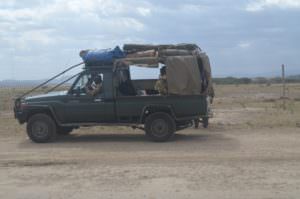 So, on September 19th, MEP sent a six-ranger rapid response unit to patrol and monitor the elephants in the Olenkuruone area of the Mau Forest for two weeks. This team was comprised of four MEP rangers and two Kenya Wildlife Service (KWS) rangers that specialize in monitoring elephants outside of protected areas in the Mara. They wanted to gather information on the extent of human activity going on inside the forest and the density of elephants. What the rapid response unit found was unexpected; three large herds of elephants (over 30) call this forest home and unfortunately, there was an alarming level of human activity.
So, on September 19th, MEP sent a six-ranger rapid response unit to patrol and monitor the elephants in the Olenkuruone area of the Mau Forest for two weeks. This team was comprised of four MEP rangers and two Kenya Wildlife Service (KWS) rangers that specialize in monitoring elephants outside of protected areas in the Mara. They wanted to gather information on the extent of human activity going on inside the forest and the density of elephants. What the rapid response unit found was unexpected; three large herds of elephants (over 30) call this forest home and unfortunately, there was an alarming level of human activity.
During the operation rangers were able to patrol a total of 203 kilometers inside the dense forest with the help of donkeys to navigate the dark and narrow pathways. They found four suspected crop-raiding elephants on the Olenkuruone boundary. Rangers monitored the movements of these four elephants and at night looked after the crops to keep elephants from destroying them overnight.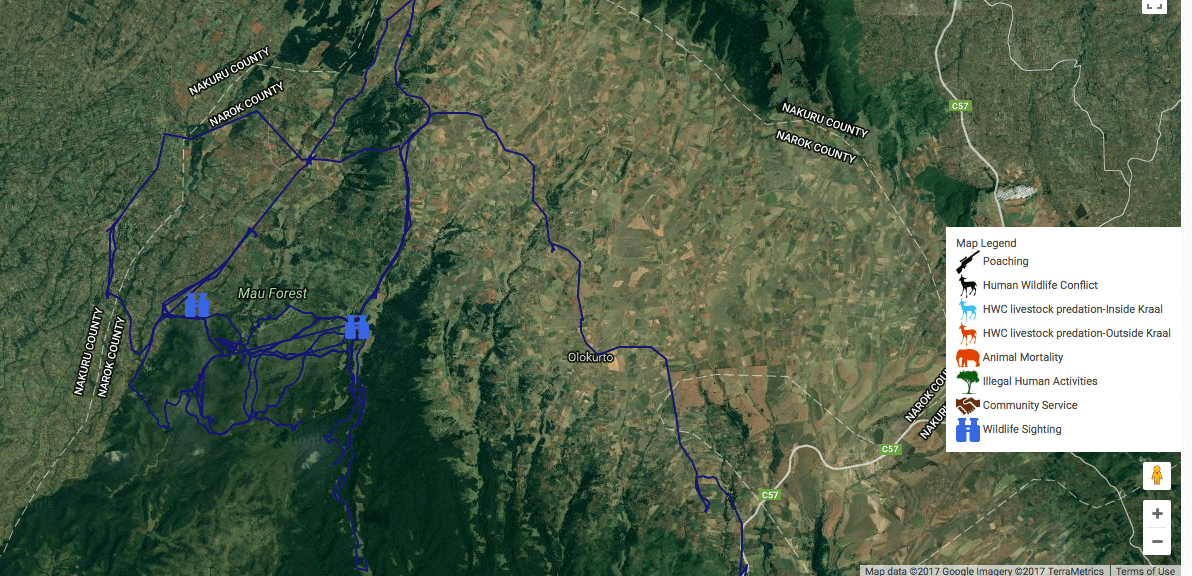
The rangers tracks in the Mau Forest.
Additionally, MEP rangers gathered intelligence from the community to better track elephant movements as well as worked with locals who were familiar with the forest to patrol the eastern portion. MEP rangers decided after this two-week mission that further reconnaissance was needed with the help of MEP’s Karen Blixen Camp Ree Park Safari helicopter.
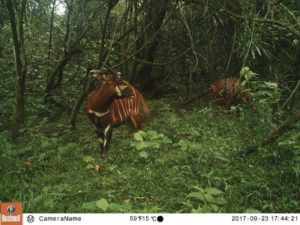
So, starting on October 10th, MEP flew three reconnaissance flights over the Mau Forest. The first, was to scout a ground route across the extent of the forest (eastern and western Mau) for the Bongo Surveillance Program (BSP) that has been successfully finding bongo antelopes (pictured right).
During the flight, we noticed this area had significant illegal logging of pencil cedar and a large operation was running to move the timber out of the forest using donkeys and tractors. The second mission, we flew to the same area with officers from the KWS in Narok and identified over 40 fresh illegal logging sites.
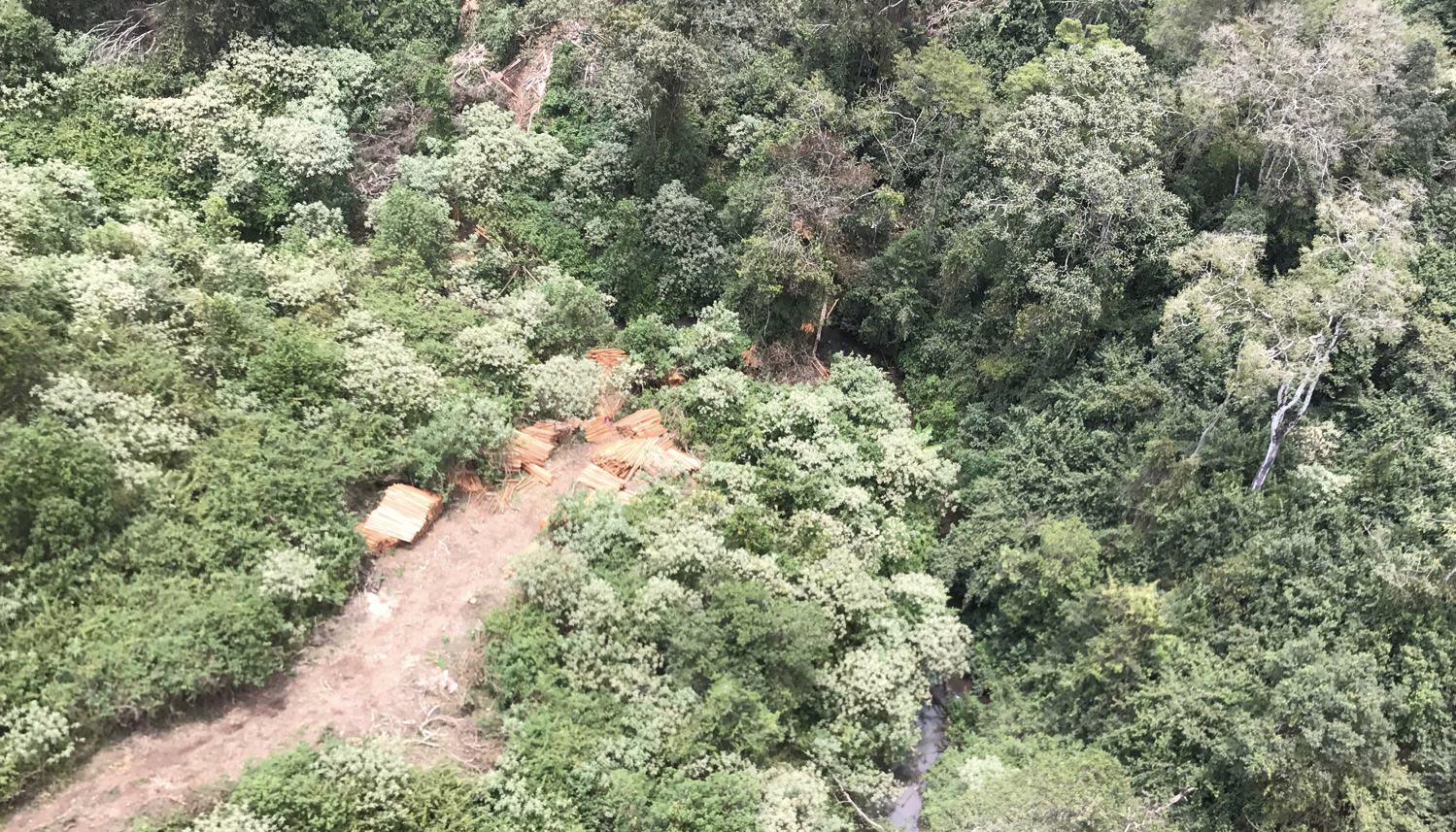 Extensive logging operations photographed from the air.
Extensive logging operations photographed from the air.
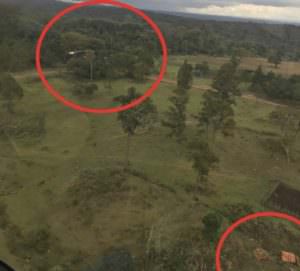
We followed one large illegal logging trail to the Osanganguri Primary School on the forest boundary and stopped by the Narok County Ngareta Forest station, which was the closest outpost. While there, we discovered just beyond the outpost, 100 to 500 meters, large caches of freshly cut wooden posts covered with brush in a natural depression (pictured left) that we reported to Narok County Government (NGC) officials. The last flight on the October 13th was to take NGC officials back to the same illegal logging sites to show them the activity.
Overall, MEP rangers were very concerned about what they saw in the Mau Forest. At the current rate of illegal logging large portions of the forest will be lost in a very short time and the bongo antelope habitat is imminently threatened. Poaching of wildlife inside the forest continues and crop raiding elephants in the Olengurone settlement area is a major concern.
In the future, MEP would like to collar two elephants in this area but unfortunately with the dense forest it will be difficult to find a viable option to safely collar an elephant. More data collection on elephant movements, ranger patrols and logging needs to be collected and shared among KWS and NCG to inform patrols. MEP would also like to base a rapid response unit in the Olenkuruone area to keep open the 2-km wildlife corridor by keeping people out. Continuing the aerial patrol flights to guide ground patrols via GPS locations will also be essential to improving this area. MEP is going to continue to work in this area and with partners to ensure the Mau Forest is safe for all wildlife.


